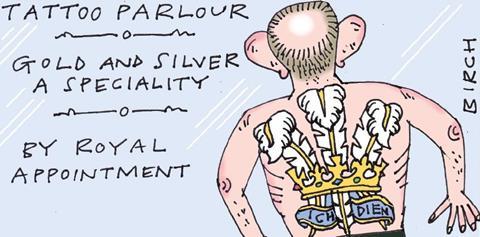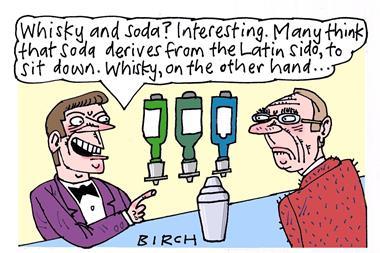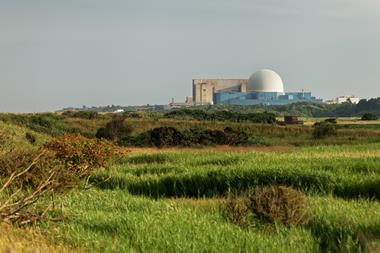Your concerns about the UK leaving Euratom, London’s air pollution and gold poisoning
The nuclear option
The decision for the UK to withdraw from the European Atomic Energy Community (Euratom), as detailed in the letter by UK Prime Minister Theresa May to European Council President Donald Tusk on 29 March, could create needless uncertainty. In particular, it will affect new nuclear power and research into fusion power, a cleaner alternative to nuclear fission in which the UK has been a global leader for decades. Leaving Euratom will add to the workload of the UK’s nuclear regulator, the Office for Nuclear Regulation, and pose problems for Hinkley Point C station in Somerset, raising questions over safety inspection regimes.
The UK nuclear industry is reliant on European goods and services, both in the nuclear supply chain and with regard to specialised nuclear skills. Outside of Euratom and the single market, the transport of nuclear fuel, equipment and trained staff will be more complex. Leaving Euratom, will inevitably increase nuclear costs and cause delays. The UK’s standing on the world nuclear stage is predicated on cooperation agreements, derived from the benefit of Euratom membership. Once removed there is no basis for international nuclear cooperation. This will affect the balance of nuclear policies in Europe.
Gerry Coughlan MRSC
Dublin, Ireland
Tramspotting
Your recent excellent location guide to San Francisco (Chemistry World, April 2017, p56) has a misleading caption. It states ‘trams still run through downtown’: while this is true, the accompanying photograph does not show a tram, but rather a cable car.
A cable car is a very different beast to a tram, being unpowered and relying on gripping a moving cable, located just beneath the road surface. It does not help speed, but does help climb hills well beyond the limits of rail adhesion on a tram.
Apologies, but some chemists are also railway enthusiasts!
J A Barry CSci CChem FRSC
Didcot, UK
London dirty air
There are well-tried methods of reducing air pollution (Chemistry World, February 2017, p16) that are in use in many cities and could be re-introduced to London, namely trolley buses and trams.
It would be useful if more research was conducted on the sources of air pollution in London including space heating and aviation in addition to road vehicles. The results of on the road testing of vehicles, chosen at random, as opposed to rolling road tests should show what is actually happening. It would help to catch those who remove diesel particulate filters and turn off the resulting warning light.
Bill Edwards CSci CChem FRSC
Braintree, UK
Gold and silver poisoning
Discoloration of the skin by tattoos can be moral boosting and satisfying for some, but on occasions they can be socially embarrassing, as Katrina Krämer points out (Chemistry World March 2017, p72). Dermabrasion is a painful way of removing them, but it is costly and not without lasting effects.

I have studied the toxic effects of metals for many years, and am familiar with conditions such as argyria and chrysiasis. These grey-blue discolorations, which become prevalent in sun-exposed areas of skin, are attributable to the ingestion or parenteral administration of silver or gold compounds respectively (Chemistry World, December 2012, p28). In the former case, silver entering the circulation precipitates in connective tissue or intercellular areas of the dermis as highly insoluble silver sulphide or silver selenide. As far as I know, these conditions persist for life and no therapies have proved successful in alleviating the problem. Chrysiasis is not so much of a problem these days, as gold salts like aurothiomalate (used in treating arthritis) are expensive and have been superseded by safer therapies. I am sure that there is a good PhD thesis waiting for a chemist to devise an effect means of alleviating these vexing problems.
Alan Lansdown FRSC
London, UK
No electric surge
In response to Norman Groocock’s letter (Chemistry World, March 2017, p5), the logic of ‘electric cars are just pushing the losses up the road’, often used against electrification of vehicles, is missing the point. Of course electric cars are not the ultimate solution to world pollution – the electricity has to come from somewhere – but this is why we are also working on renewables, in an attempt to clear our air in conjunction with other solutions.
It is a false assumption that the electricity is mostly going to come from burning fossil fuels. Even now there are countries where more than 50% of electricity is or will be soon produced from renewable sources, such as Scotland and Denmark. As for the lithium demand, there is enough for a good amount of electric cars, and let’s not forget there are alternative technologies happy to take the place of Li-ion batteries if they fall short.
No technology is perfect, but taking small and challenging steps is still better than giving up altogether on our environment for convenience.
Tazdin Amietszajew AMRSC
Coventry, UK
Correction
In our feature The urban mine (Chemistry World, April 2017, p16) we state that hydrogen peroxide is added as a reducing agent when recovering materials form circuit boards. It is used as an oxidising agent.












No comments yet